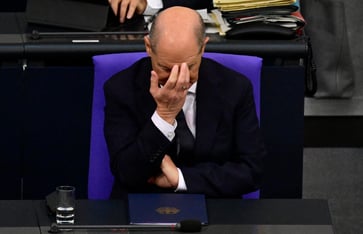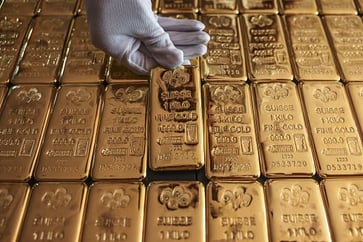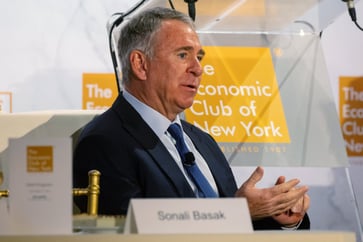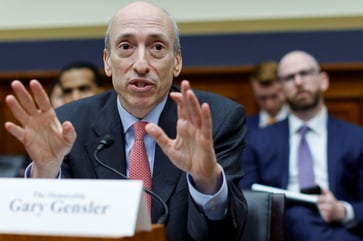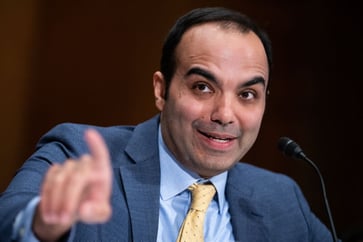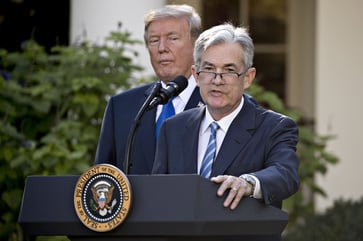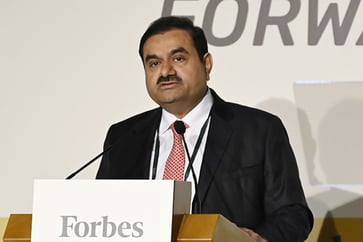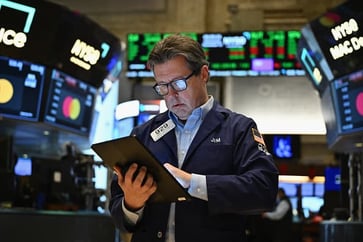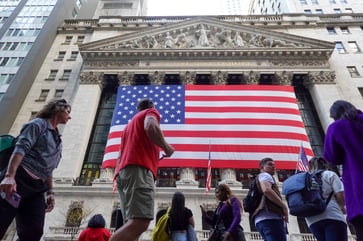The impact of a Fed rate cut on the global economy

- The Federal Reserve is expected to make its first rate cut this week, affecting various global markets including currencies, commodities, equities, and bonds.
- This year, several central banks reduced interest rates before the Federal Reserve, while closely observing its actions for possible ripple effects.
- The uncertainty surrounding the Fed's decision to cut interest rates on Wednesday has increased.

The Federal Reserve is set to make its first interest rate cut since the pandemic on Wednesday, although this is expected, global investors are still preparing for the consequences.
Central banks in the euro zone, the U.K., Canada, Mexico, Switzerland, and Sweden have already cut rates, leaving the Fed behind.
Several policymakers emphasized their readiness to take a proactive approach in addressing economic challenges, such as slow growth and inflationary pressures, by moving ahead of the Fed, which is often viewed as the global benchmark.
Some analysts have questioned how much further they could go before the Fed, the world's biggest central bank by assets, followed suit, given the impact of its actions.
Global impact
A key concern is the pressure interest rate differentials put on currencies.
In general, higher interest rates attract more foreign investors seeking higher returns, which in turn increases the value of the domestic currency.
The Japanese and Turkish currencies have been underperforming in the current cycle, despite their central banks keeping interest rates low. Meanwhile, the US dollar has strengthened against a basket of currencies, as the Federal Reserve has raised interest rates aggressively in 2022.
Central banks face challenges in controlling inflation when the currency is weak, as it raises the cost of imported goods.
The Federal Reserve's rate-setting has a significant impact on the U.S. economy, especially considering the current emphasis on a weak job market and the possibility of a recession.

Richard Carter, head of fixed interest research at Quilter Cheviot, stated that a rate cut by the Fed would have a significant impact on asset prices globally, given its role as a key driver of global growth.
Gold hit a record high this week on expectations of a move by the Fed. Higher rates are generally viewed to be a drag on gold since they make fixed-income investments, such as bonds, more attractive, although historically this has not always been the case. Gold is also used as a hedge against inflation (which can be pushed higher as rates go lower) and investors also buy the commodity in times of market stress.
Lowering interest rates on commodities, which are typically priced in dollars, can stimulate demand and boost the economy by making borrowing cheaper.
Emerging markets are more sensitive to Fed moves than bigger economies, and equity markets worldwide are affected by these moves.
The global stock market has been affected by speculation about the U.S. central bank's decision to lower interest rates.
Richard Carter of Quilter Cheviot stated via email that interest rate cuts decrease the cost of borrowing in U.S. dollars, resulting in easier liquidity conditions for companies worldwide.
He suggested that lowering U.S. interest rates should decrease the yield on U.S. assets like Treasurys, making other markets more attractive.
First cut the deepest?
Although markets anticipate the Fed to initiate its rate-cutting cycle on Wednesday, there is significant ambiguity regarding the extent and speed of its actions during the upcoming three meetings this year and beyond 2025.
The Fed funds rate is expected to be reduced by either 25 or 50 basis points below its current range of 525 to 550, according to market pricing for the larger "jumbo" cut, which has increased from under 50% to nearly 70% over the past week, as indicated by CME Group's FedWatch tool.

According to Steven Bell, chief economist at Columbia Threadneedle, the markets will always respond to the outcome.
The Fed's failure to provide guidance ahead of the meeting, so close to the U.S. presidential election, is unusual. It suggests that the committee is divided.
The November election has sparked debates about the future of U.S. fiscal policy and its potential effects on inflation and monetary policy.
According to Joe Tuckey, head of foreign exchange analysis at Argentex, an initial 50 basis point rate cut by the Fed has historically resulted in poor returns in equity markets, as seen in 2007 before the Great Financial Crisis and in the early 2000s during the tech bubble market crash.
Tuckey stated that the requirement for a larger reduction indicates growth issues and economic difficulties in the future.
Hani Redha, multi asset portfolio manager at PineBridge Investments, stated that it is "more critical" to consider pricing for more than 270 basis points worth of cuts until the end of 2025.
Redha stated that the market was still undecided due to insufficient economic data, which favored defensive sectors.
"Initially, the reaction to the economic data may be mixed, but equities may still hold up until there's a more decisive break."
Markets
You might also like
- Precious metal investors are being distracted by the allure of the crypto rally, according to State Street.
- Henry Schein can improve profits by implementing the suggestions of activist Ananym.
- Artificial intelligence could require more electricity from data centers than cities.
- Scott Bessent, a hedge fund executive, is chosen by Donald Trump for the position of Treasury secretary.
- A longer walk to the terminal gate for airline passengers may occur.




